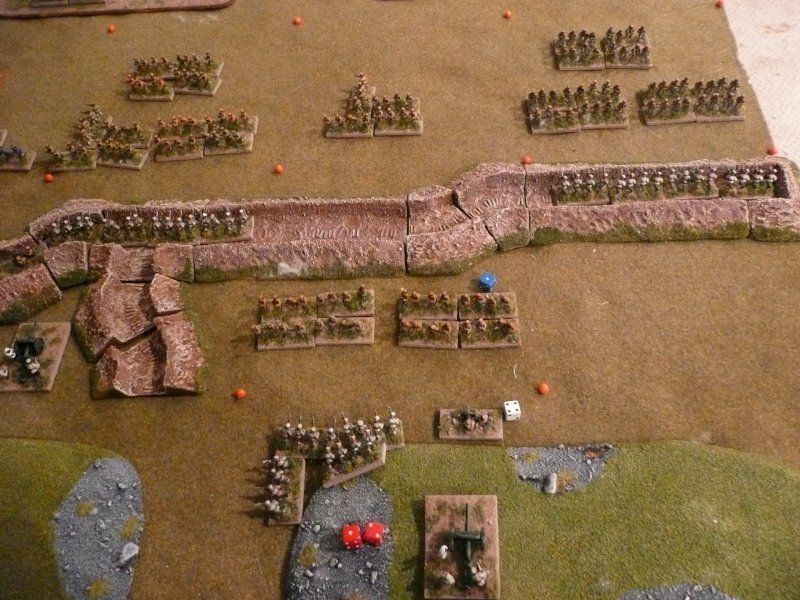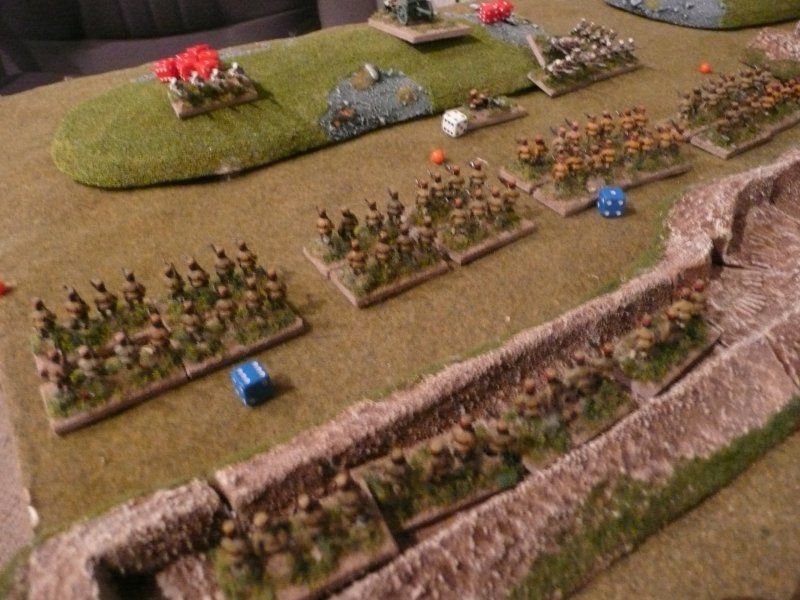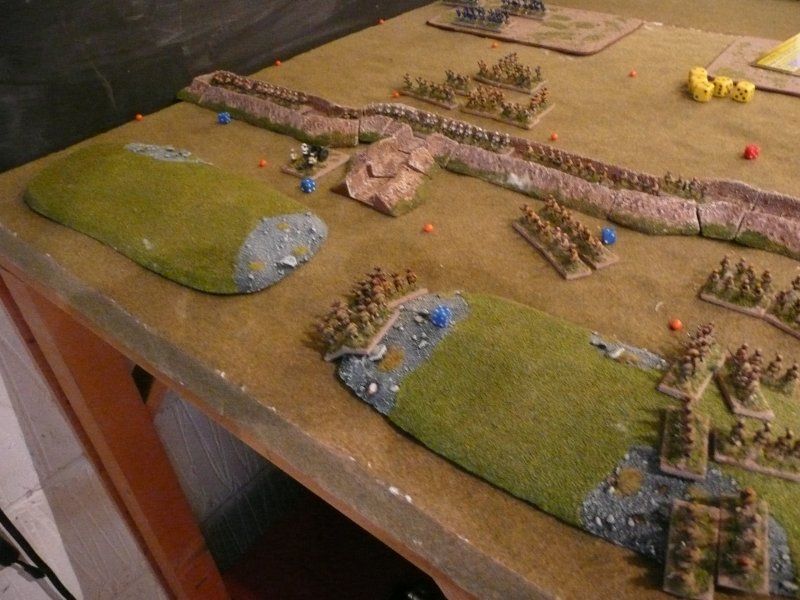This is a fictitious battle set in the Russo-Japanse War fought using RFCM's Square Bashing 2012. There is a page on the Peter Pig website explaining the rules - here's the link
Square Bashing (SB) is played on a 4 foot wide by 3 foot deep area covered by a 6 inch square grid. Terrain pieces are 6 x 12 inches and cover 2 squares. Objectives are 6 inches square
In SB both sides chose 4 pieces of terrain from gentle hills, rough hills, rough ground and buildings. All terrain is then deployed by the defender with the attacker having a chance to move pieces. Two roads are placed - one along the defenders' base line and the other across the table. The crossroads square becomes 1 of the 4 game objectives. There are 3 other objectives deployed by the defender - the grassy knoll (a small rough hill), a temple and a kaoliang field (woods)
Amongst the new rules in SB is one that allows you to choose how High Command (the general) works. It can benefit either movement, fighting, morale or assets - the twist is that the chosen benefit can not be changed.
The quick game pits a standard army of 620 points attacking a 450 point army
The Japanese commanded by Rodge and Steve were the attackers with
|
The Russians commanded by Alan P and Mike defended with
|
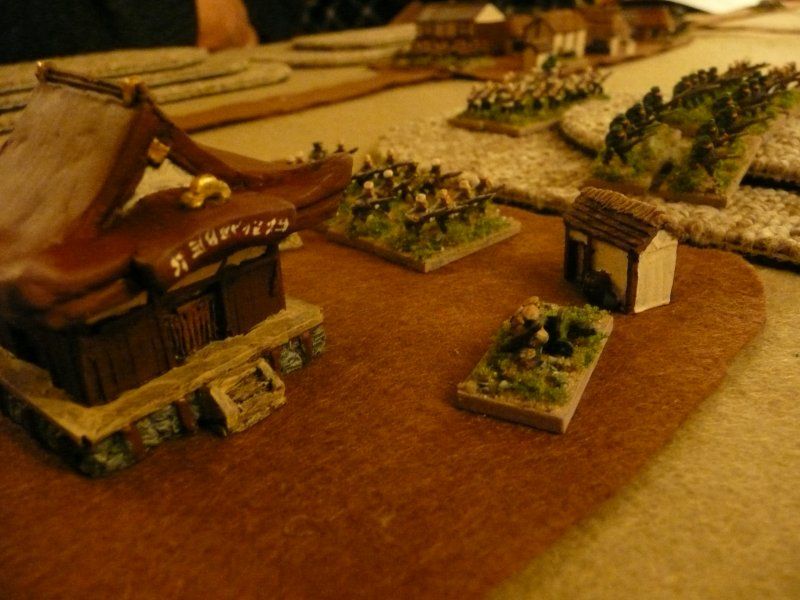 | 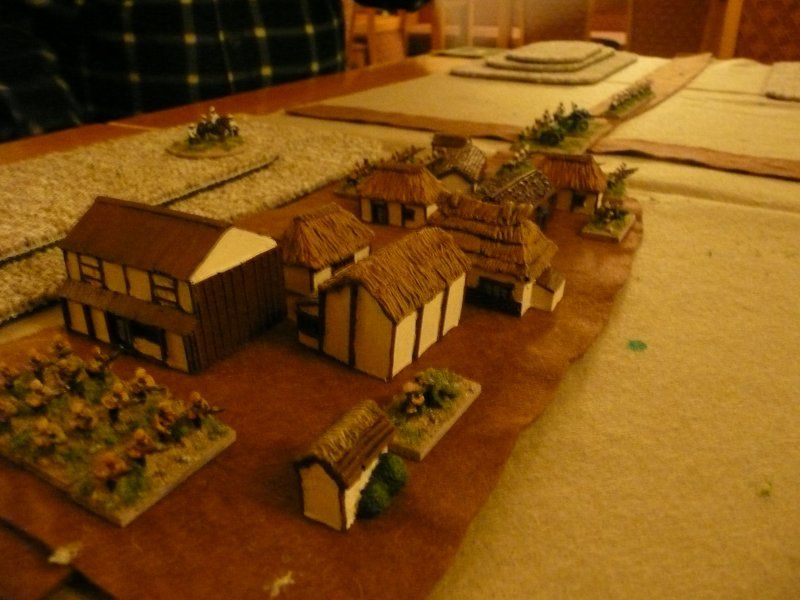 |
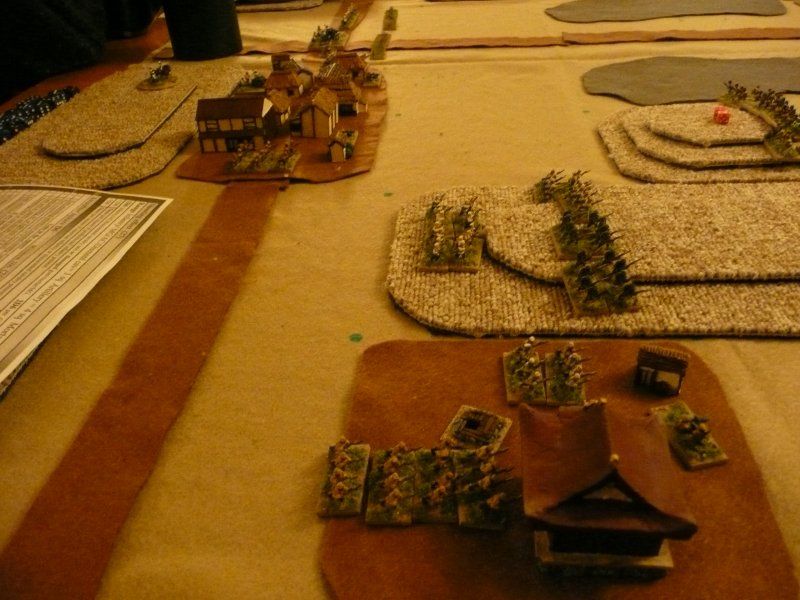 | 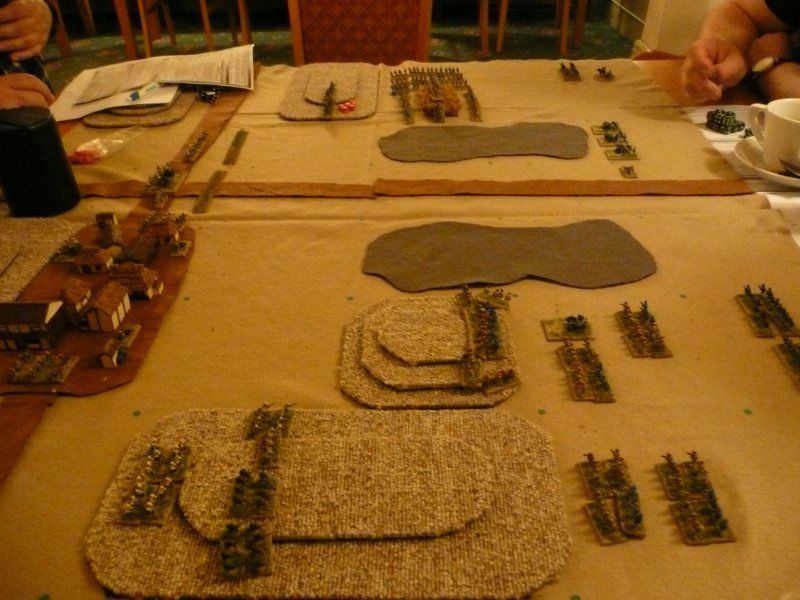 |
The Japanese then assaulted the 2 Russian Reservist battalions from the flank as well as from the front. Being assaulted in the flank as in most rules is not good and the Russians were pushed back losing 50% of their troops.
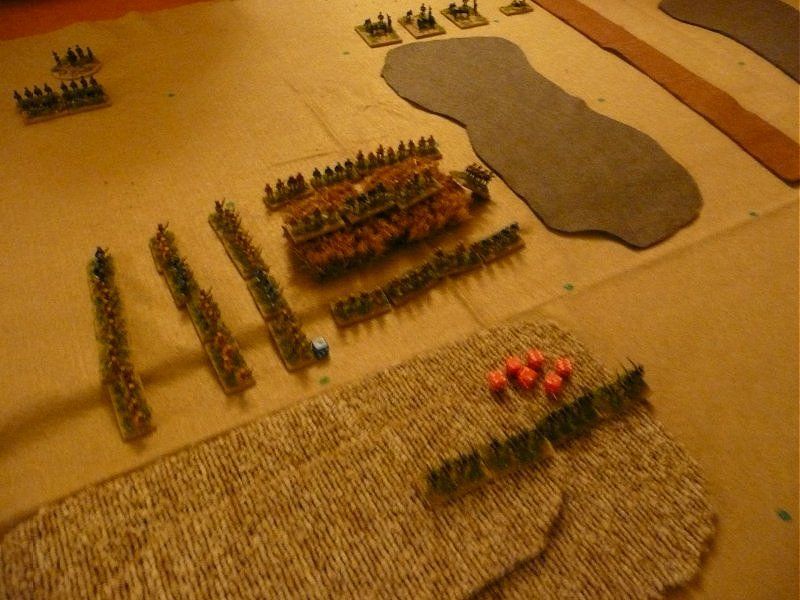 |  |
The Russian reservists failed their morale test and were forced to retire from the hill. Along the centre and right troops were being pulled from the line to bolster the collapsed left.
On Turn 3 the Japanese continued hammering the Russian left flank
The two reservist battalions disintegrated and the battalion holding the far left of the line received 4 casualties losing 2 bases and having to retire. The Japanese stood poised to breakthrough to the table edge or roll up the Russian line.
Sadly for the Russians the rest of their line was coming under mounting pressure.
Although the quick game does not include Assets we decided to use Point Barrage and Hasty Defences, The Point Barrage is off-table artillery that targets 3 squares in an L shape causing a D6 of hits to the square. Hasty Defence allows temporary cover in the form of the assaulter losing 2 dice and increasing saving rolls.
Armies are allocated a number of dice per asset - the Japanese Barrage is 12 dice, the Russian barrage is lower with 8. An army is allowed to roll for 1 asset each turn using up as many of their dice as they want. To get the asset requires rolling a 6. The Japanese had rolled 4 dice each turn from their Barrage allowance but only succeeded in rolling a 6 with the last of their 4 dice on Turn 3.
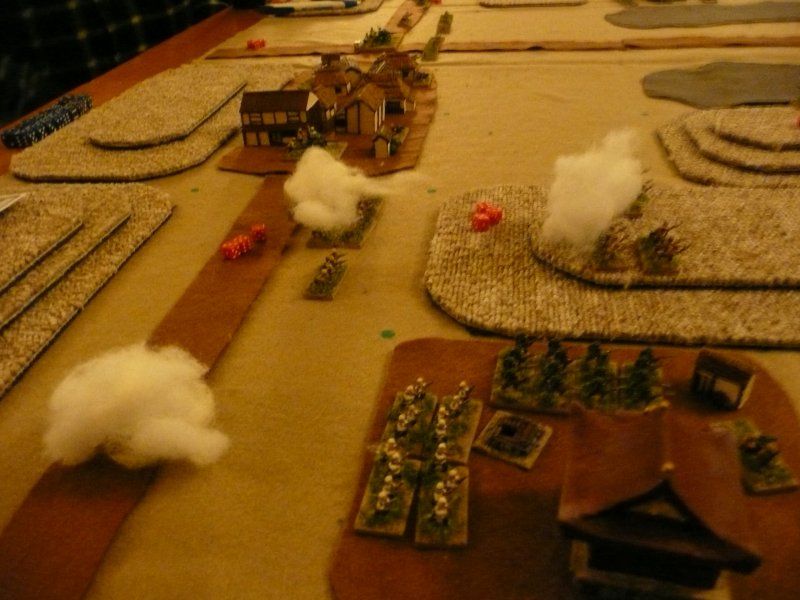 | 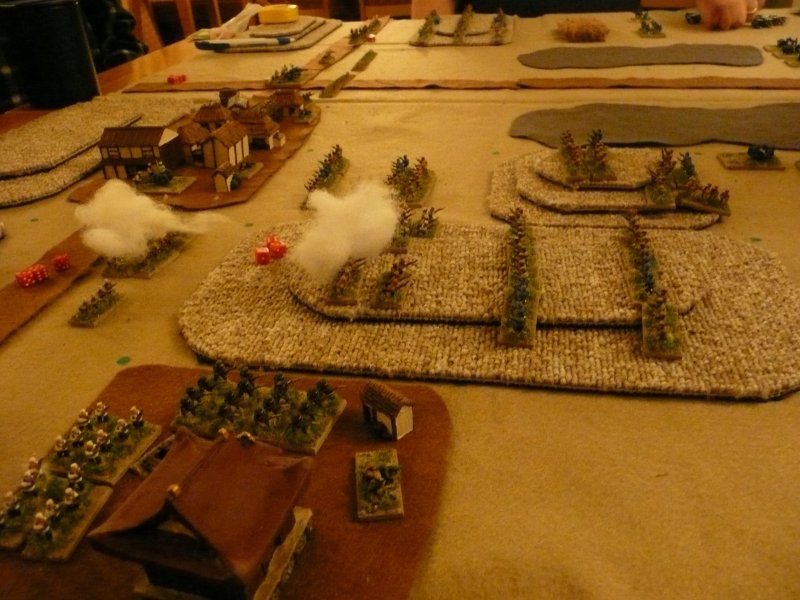 |
At this point the Russians conceded the game.
Tallying up the points gave the Japanese an unsurprising Definite Victory. The points for holding an Objective can be quite variable - for the attacker it is 4D6 - the Row number, which counts the Defender's base row as 1 across to 6 for the attcker's base row.. Therefore the kaoliang field in row 4 was 4D6 - 4 so could be worth anywhere between 0 and 20 points to the attackers.
In the post-match analysis the defenders felt that it was too easy for the attackers to assault with little in the way of defensive fire to halt them and that getting 3 dice to the defender's 2 dice in an assault was a big advantage
My view is that it was easy to attack and if the defender was in the open then it was probably easy to win. However if the defender was in good position with defences and supporting troops then it would be a different matter.
The defender has certainly not got an easy job in SB. From the placement of terrain and objectives through having units disappear via the depletion rolls to holding the line and making sure the flanks aren't turned will keep the defender busy.
From a game aspect it is fast and reasonably simple. I don't feel that having a grid detracts from the game. The High Command and Asset mechanisms work well. One area that players had issue with was Line of Sight but we might have been playing that wrong.
From the Russo-Japanese War aspect I am pleased with it. In my opinion it handles a divisional assault reasonably well. My only gripe is how to represent the Japanese use of HMGs in attacks as they only have a range of 1 for firing and only count 1 in assault or for support
If the guys at Slimbridge are up for it then I am looking to run a campaign at the club
There is a lot more to SB 2012 than the original game - I'm keen to play more.







